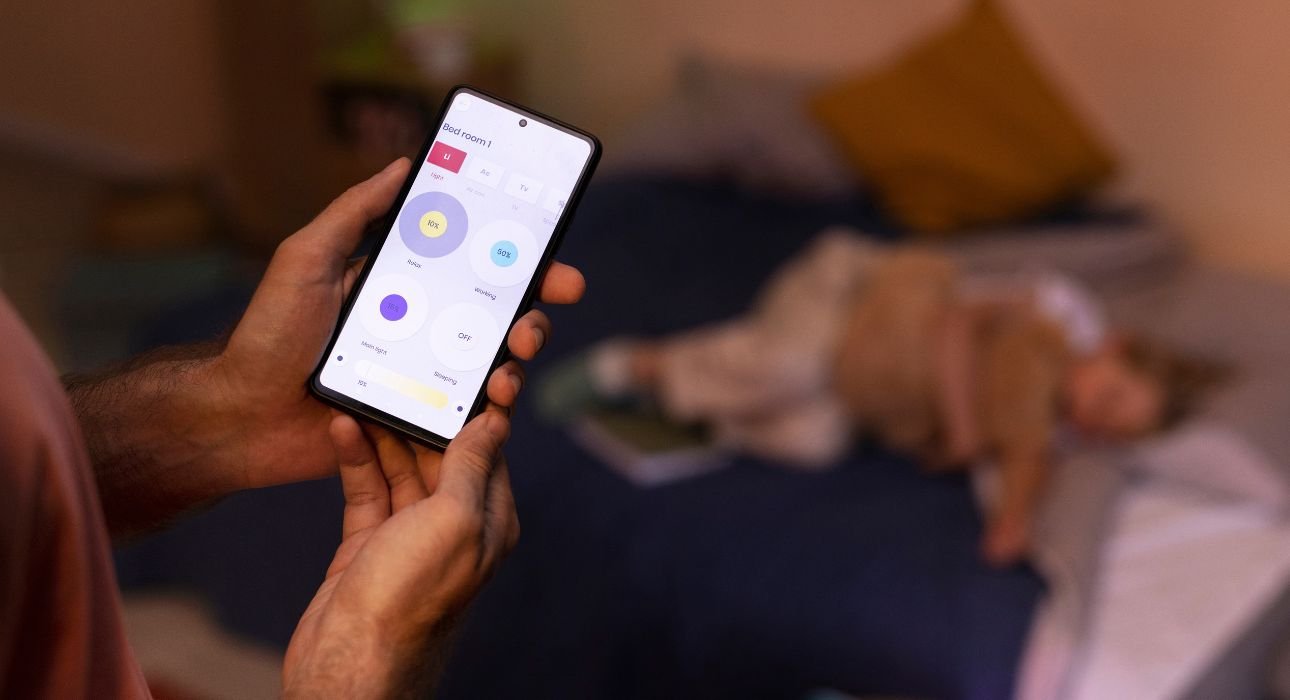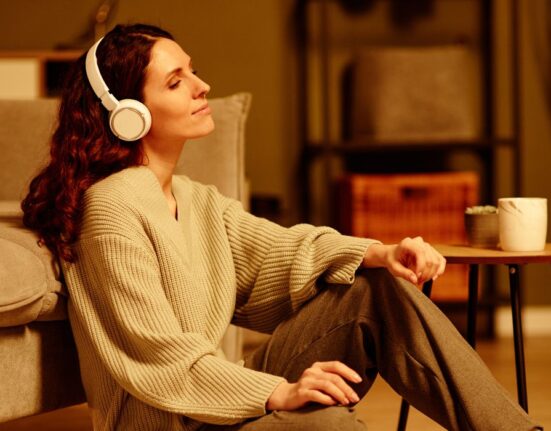Ever felt like battling doubt, stress, or anxiety is a lonely uphill trek? What if managing mental health could feel less like a chore and more like a journey? Imagine digital apps or mobile games that turn self-care into fun, weaving community, progress and rewards into the heart of healing. This is the rising world of gamified mental health interventions, tools using game design elements (like points, badges, narrative, friendly competition and social engagement) to make mental-wellness practices more appealing, meaningful and community-oriented. If you’re curious whether pairing psychology with game mechanics can actually work, this article dives in deep, covering where it’s effective, what design features matter, how communities strengthen outcomes and where the evidence still needs to catch up.
Read More: Government Proposes Self-Regulation for Online Gaming Companies
Why Gamification in Mental Health?
1. The Engagement Crisis in Digital Mental Health
Although smartphone apps, e-therapies and self-help platforms are proliferating, many users stop using them within days or weeks. Fleming et al. (2023) observe that while digital tools could reach millions, their uptake and sustained engagement remain disappointingly poor, undermining impact. Simply put, people start but don’t stick with them. Gamification offers a solution by making intervention delivery more intrinsically motivating and rewarding, rather than relying solely on willpower.
2. A Small but Promising Effect
Meta-analyses tell a cautious tale: gamified mental-health tools show small to medium effect sizes and demonstrate benefits for general wellness, anxiety and depression compared to non-gamified controls. Another review of adult interventions reports consistent benefits to psychological well-being and depressive symptom reduction. These are signs that gamification, when thoughtfully done, can contribute meaningfully.
Read More: Productivity Apps: Improve mental well-being or create stress?
Design Elements That Drive Community Engagement
Beyond simple rewards, gamification thrives when rooted in strong design:
1. Narrative & Shared Storytelling
Apps like SPARX and Kuamsha use immersive narratives to deliver therapy. SPARX embeds CBT in a fantasy game and was found to be as effective as traditional care, with users especially valuing its engaging story (Merry et al., 2012). Kuamsha combines storytelling with peer-guided therapy, achieving high engagement through co-design and cultural relevance (Rathod et al., 2022).
2. Social Mechanics & Collaboration
Community features support relatedness, a key need in self-determination theory. AR-based games like LINA build belonging through shared experiences (Cila et al., 2022). Peer integration via group modules or mentors boosts engagement, as shown by Kuamsha’s successful use of telephonic peer support (Munson et al., 2022).
3. Rewards & Feedback
Badges, challenges and progress bars promote autonomy and competence. A review found that reward systems and progress tracking are the most common game mechanics in adult mental health apps (Cheng et al., 2020). Even apps like Headspace use achievements and visual cues to improve retention (Looyestyn et al., 2020).
4. Personalisation & Adaptive Design
Generic game features may miss the mark. Research shows user-specific factors like gender or symptom type can influence outcomes (Fleming et al., 2023). Adaptive systems like bandit algorithms can tailor content based on behaviour, optimising engagement (Gajos et al., 2021).
Read More: How Does Storytelling Transforms Mental Health?
Core Themes in Gamified Intervention Design
1. Co-Design & Cultural Relevance
Involving users in the design process, as seen in LINA and Kuamsha, ensures interventions are rooted in real-world needs. Kuamsha’s youth-designed approach broke down literacy and cultural barriers in Uganda (Rathod et al., 2022). Co-design familiarises people with tools, makes them more trusting and more culturally attuned (Cila et al., 2022).
2. Ethical & Theoretical Foundations
Ethical design is critical, particularly in youth-oriented apps. A recent review emphasises building privacy, autonomy and empowerment in from the very beginning (Schoech et al., 2023). Meanwhile, theory should inform structure. Cheng et al. (2020) emphasise aligning game mechanics with psychological frameworks such as behaviour change theory for an impactful effect.
3. Community as Catalyst
Both connection and recovery are fueled by peer support. Meta-analyses of peer-delivered CBT suggest that it can increase depression treatment as much as clinician-delivered therapy (Pfeiffer et al., 2011). Apps that incorporate peers as role models or team members boost motivation and results (Munson et al., 2022).
4. Measuring Engagement vs. Symptom Change
Studies typically demonstrate enhanced participation via gamification, but converting this to symptom decrease remains a challenge. The eQuoo RCT demonstrated improved retention and enhanced resilience over a non-gamified control, but was less able to directly credit gamification for gains. Likewise, Six et al. (2021) determined that gamification did not meaningfully surpass typical depression apps in symptom reduction or adherence. This raises an important question: What game mechanics shift the needle in mental health?
Read More: How Core Beliefs Shape Our Perspective and Behaviour
Designing for Impact
All gamified mental health tools are not created equal. It is not about throwing points and badges around; it is about careful, user-centred, theory-based design. Here’s what the research indicates actually works:
- Adapt Tools to User Needs: Gamification needs to suit the user’s state and emotional condition. Teenagers with anxiety or ADHD might be encouraged by rapid rewards, but a person working through grief or trauma will be overwhelmed. Elements of games can fail when in conflict with user context (Six et al., 2021).
- Construct with Communities: Co-design increases relevance and trust. Developments such as Kuamsha, created in collaboration with Ugandan youth, resulted in culturally relevant tools and increased interaction (Rathod et al., 2022). Engaging with users assists in revealing community needs and making the experience seem more realistic.
- Psychological Theory Ground Design: Good gamified tools borrow from the science of human behaviour. Self-Determination Theory (Ryan & Deci, 2000) posits autonomy, competence and relatedness- requirements that game mechanics can satisfy through feedback loops, adjustable tasks and social elements. Cheng et al. (2020) emphasise aligning design with therapy objectives.
- Prioritise Ethics and Safety: Mental health design includes safeguarding emotional welfare, particularly among young people. Ethical behaviours like transparent consent, privacy protection and emotional safety need to be embedded from the beginning (Schoech et al., 2023).
Carefully crafted gamified solutions feel intimate, engaging and safe. When informed by theory, empathy and lived experience, they have the potential to render mental health support more effective and more human.
Read More: The Other Side of Grief: Exploring Non-Traditional Bereavement
Stories That Work: Real-World Examples of Gamified Community Engagement
While frameworks guide design, real-world tools reveal what truly works. Several standout interventions show how gamified mental health apps use design and community to drive impact. SPARX delivers CBT to adolescents through a fantasy game with quests tied to therapy techniques like challenging negative thoughts. It matched face-to-face therapy in trials, with users praising its engaging format (Merry et al., 2012). Kuamsha, co-developed with Ugandan youth, blends storytelling with peer-led therapy. Its culturally resonant design and phone-based mentorship build trust in low-resource settings (Rathod et al., 2022).
LINA, an AR classroom game, mixes stories with real-world exploration and group tasks. It boosts engagement and peer connection (Cila et al., 2022). Even commercial tools like eQuoo, which teach psychological skills through interactive stories, show strong results. A randomised trial reported greater resilience and fewer dropouts compared to non-gamified apps (Fleming et al., 2023). These examples illustrate that gamification is not a recipe; it’s an attitude. When embedded in user needs, culture and theory, it’s a powerful tool for mental health support.
Read More: CBT for Treating GAD among School Children/Adolescents
Challenges, Innovations and the Future of Gamified Healing
As gamified mental health apps take off, several major challenges remain. First, what elements work? Studies often bundle features-points, stories and avatars, making it hard to pinpoint what drives results. Future research must isolate these components (Six et al., 2021). Second, are the benefits lasting? Many apps show short-term promise, but it’s unclear if gains endure. Long-term studies are needed. Personalisation matters. Most tools are static, but adaptive models like multi-armed bandit algorithms can tailor content to user behaviour and mood (Gajos et al., 2021).
Inclusivity is urgent. Whereas initiatives such as Kuamsha demonstrate movement, too many communities, like low-income populations, LGBTQ+ youth, and neurodiverse users, remain forgotten. Gamification has the potential to assist, however, only if equity informs design. Lastly, ethics have to take the lead. Consent, privacy and emotional safety are paramount. According to Schoech et al. (2023), ethical frameworks have to inform data use and game mechanics. To transform, gamified tools have to adapt, be inclusive and ethically robust.
Read More: Psychology Behind Candy Crush Addiction
Conclusion
Gamified mental health treatments, specifically those that are theory-based, community-designed and social-enabled, hold the potential to transform the provision of mental health treatment. Though studies indicate small but significant effects, the secret isn’t just sprinkling badges on things; it’s creating experiences where participation, meaning, mastery and connection intersect.
By bringing together compelling game design, social support, narrative context and cultural sensitivity, these interventions treat mental illness as well as build connection, strength and empowerment within communities. With careful, ethical and responsible design, grounded in research and community voice, these gamification interventions are poised to redesign a new landscape in community-based, accessible mental-health care.
So the next time you notice a badge appear or participate in a social challenge that addresses mental health, keep in mind, it may be more than a game. It may be a collaborative journey towards a better mind and better communities.
FAQs
1. What is gamified mental health, and how does it work?
Gamified mental health refers to using game-like features—such as points, narratives, rewards and collaboration—to make mental health interventions more engaging. These tools turn therapy or self-care into interactive, motivating experiences that encourage participation and long-term use.
2. Why is gamification important in digital mental health tools?
Many users drop out of digital mental health apps quickly. Gamification increases “stickiness” by making the process more rewarding and enjoyable, which helps improve retention, motivation and sometimes even treatment outcomes.
3. How does the community play a role in these interventions?
Community features like peer mentorship, forums and collaborative tasks fulfil our need for connection—a key part of well-being. Apps like Kuamsha and LINA show that when users feel supported and socially connected, engagement and healing improve.
4. What design elements make gamified mental health tools effective?
Key elements include immersive storytelling, personalised progress feedback, social interaction and co-designed culturally relevant content. These features align with psychological theories and ensure the intervention resonates with users.
5. Are gamified apps suitable for everyone?
Not always. The effectiveness of game elements depends on the user’s emotional state, diagnosis and cultural context. For instance, high-energy rewards may motivate some but overwhelm others. Tailored design is crucial for safety and effectiveness.
6. What are the limitations of gamified mental health tools?
While gamified tools show promise, evidence of long-term effectiveness is still emerging. More research is needed to identify which specific game elements truly improve mental health—not just engagement—and to ensure ethical, inclusive design.
References +
Cheng, V. W. S., Davenport, T. A., Johnson, D., Vella, K., & Hickie, I. B. (2020). Gamification in apps and technologies for improving mental health and well-being: systematic review. JMIR Mental Health, 7(6), e13717. https://doi.org/10.2196/13717
Cila, N., Rashid, S., & de Vries, R. A. J. (2022). Designing Augmented Reality games for mental health in school contexts. Proceedings of the 2022 CHI Conference on Human Factors in Computing Systems. https://doi.org/10.1145/3491102.3517599
Fleming, T. M., de Beurs, D., Khazaal, Y., Gaggioli, A., Riva, G., Botella, C., … & Baumeister, H. (2023). The impact of a gamified mobile mental health app (eQuoo) on resilience, depression, anxiety, and attrition in college students: Randomised controlled trial. JMIR Mental Health, 10(1), e47285. https://doi.org/10.2196/47285
Gajos, J. M., Karr, C. J., & Tobin, E. (2021). Multiplayer modelling via multi-armed bandits: Toward personalisation in game-based interventions. In Proceedings of the IEEE Conference on Games (pp. xxx–yyy). IEEE. https://doi.org/10.1109/CoG52621.2021.9618899
Looyestyn, J., Kernot, J., Boshoff, K., Ryan, J., Edney, S., & Maher, C. (2020). Does gamification increase engagement with online programs? A systematic review. PLoS ONE, 15(3): e0235898. https://doi.org/10.1371/journal.pone.0235898
Merry, S. N., Stasiak, K., Shepherd, M., Frampton, C., Fleming, T., & Lucassen, M. F. G. (2012). The effectiveness of SPARX, a computerised self-help intervention for adolescents seeking help for depression: randomised controlled non-inferiority trial. BMJ, 344, e2598. https://doi.org/10.1136/bmj.e2598
Rathod, S., Pozuelo, J. R., Moffett, B. D., Davis, M., Gumikiriza-Onoria, J. L., Kinyanda, E., … & O’Mahen, H. A. (2024). A narrative-gamified mental health app (Kuamsha) for adolescents in Uganda: mixed-methods feasibility and acceptability study. JMIR Serious Games. https://games.jmir.org/2024/1/e59381/
Schoech, D., Arundel, L., & He, X. (2023). Ethical frameworks in digital mental health for youth: a scoping review. Children and Youth Services Review, 150, 106942. https://doi.org/10.1016/j.childyouth.2023.106942
Pfeiffer, P. N., Heisler, M., Piette, J. D., Rogers, M. A., & Valenstein, M. (2011). Efficacy of peer support interventions for depression: a meta-analysis. General Hospital Psychiatry, 33(1), 29–36. https://doi.org/10.1016/j.genhosppsych.2010.10.002
Six, S. L., Byrne, K. A., Tibbett, T. P., & Pericot-Valverde, I. (2021). Examining the effectiveness of gamification in mental health applications for depression: Systematic review and meta-analysis. JMIR Mental Health, 8(11), e32287. https://doi.org/10.2196/32287













Leave feedback about this